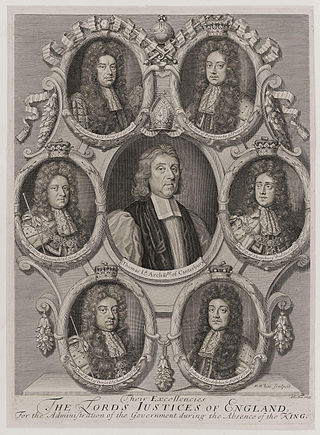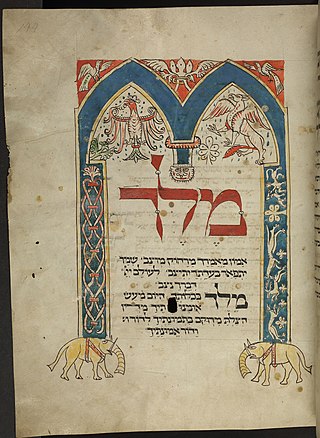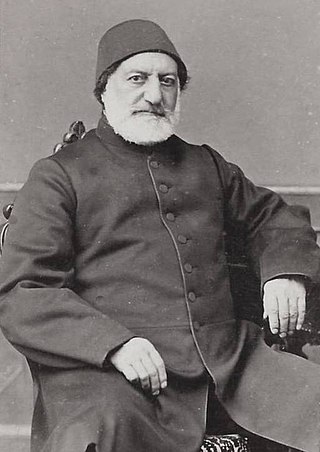Related Research Articles
A style of office or form of address, also called manner of address, is an official or legally recognized form of address for a person or other entity, and may often be used in conjunction with a personal title. A style, by tradition or law, precedes a reference to a person who holds a post or political office, and is sometimes used to refer to the office itself. An honorific can also be awarded to an individual in a personal capacity. Such styles are particularly associated with monarchies, where they may be used by a wife of an office holder or of a prince of the blood, for the duration of their marriage. They are also almost universally used for presidents in republics and in many countries for members of legislative bodies, higher-ranking judges, and senior constitutional office holders. Leading religious figures also have styles.

Excellency is an honorific style given to certain high-level officers of a sovereign state, officials of an international organization, or members of an aristocracy. Once entitled to the title "Excellency", the holder usually retains the right to that courtesy throughout their lifetime, although in some cases the title is attached to a particular office and is held only during tenure of that office.

A vizier is a high-ranking political advisor or minister in the Near East. The Abbasid caliphs gave the title wazir to a minister formerly called katib (secretary), who was at first merely a helper but afterwards became the representative and successor of the dapir of the Sassanian kings.

Malik is the Semitic term translating to "king", recorded in East Semitic and Arabic, and as mlk in Northwest Semitic during the Late Bronze Age.
Traditional rank amongst European royalty, peers, and nobility is rooted in Late Antiquity and the Middle Ages. Although they vary over time and among geographic regions, the following is a reasonably comprehensive list that provides information on both general ranks and specific differences. Distinction should be made between reigning families and the nobility – the latter being a social class subject to and created by the former.

His/Her Serene Highness is a style used today by the reigning families of Liechtenstein, Monaco and Thailand. Over the past 400 years, it has also used as a style for senior members of the family of Hazrat Ishaan, who are believed to succeed Prophet Muhammad based on the 1400 year old Sunni Sayyid ul Sadatiyya line of Imamate of Ahlul Bayt. Until 1918, it was also associated with the princely titles of members of some German ruling and mediatised dynasties and with a few princely but non-ruling families. It was also the form of address used for cadet members of the dynasties of France, Italy, Russia and Ernestine Saxony, under their monarchies. Additionally, the treatment was granted for some, but not all, princely yet non-reigning families of Bohemia, Hungary, Italy, Poland, Romania and Russia by emperors or popes. In a handful of rare cases, it was employed by non-royal rulers in viceregal or even republican contexts.

His Eminence is a style of reference for high nobility, still in use in various religious contexts.
Sidi or Sayidi, also Sayyidi and Sayeedi, is an Arabic masculine title of respect. Sidi is used often to mean "saint" or "my master" in Maghrebi Arabic and Egyptian Arabic. Without the first person possessive object pronoun -ī (ي-), the word is used similarly in other dialects, in which case it would be the equivalent to modern popular usage of the English Mr. It is also used in dialects such as Eastern Arabic, as well as by Muslims of the Indian subcontinent in the Urdu language where, however, it does not have as much currency as Sayyid , Janab or Sahib.
Highness is a formal style used to address or refer to certain members of a reigning or formerly reigning dynasty. It is typically used with a possessive adjective: "His Highness", "Her Highness" (HH), "Their Highnesses", etc. Although often combined with other adjectives of honour indicating rank, such as "Imperial", "Royal" or "Serene", it may be used alone.
Sahib or Saheb is an Arabic title meaning 'companion'. It was historically used for the first caliph Abu Bakr in the Quran.

The Reis ül-Küttab, or Reis Efendi, was a senior post in the administration of the Ottoman Empire. Translated as "chief of the scribes" or "head clerk", the holder of the post was originally the head of the chancery of the Imperial Council, evolving into an analogue to a Foreign Minister. In 1836, the title of reis ül-küttab was formally changed to Foreign Minister with the establishment of the Ottoman Ministry of Foreign Affairs during the Tanzimat reforms.

Beylerbey was a high rank in the western Islamic world in the late Middle Ages and early modern period, from the Anatolian Seljuks and the Ilkhanids to Safavid Empire and the Ottoman Empire. Initially designating a commander-in-chief, it eventually came to be held by senior provincial governors. In Ottoman usage, where the rank survived the longest, it designated the governors-general of some of the largest and most important provinces, although in later centuries it became devalued into a mere honorific title. The title is originally Turkic and its equivalents in Arabic were amir al-umara, and in Persian, mir-i miran.

Khan Sahib is a compound of Khan "Leader" and Sahib "Master" - was a formal title of respect and honour, which was conferred mainly on Muslim, but also to Parsi, Irani, and Jewish subjects of the British Indian Empire. It was a title one degree lower than Khan Bahadur, but higher than that of Khan.
Pasha was a high rank in the Ottoman political and military system, typically granted to governors, generals, dignitaries, and others. Pasha was also one of the highest titles in the 20th-century Kingdom of Egypt and it was also used in Morocco in the 20th century, where it denoted a regional official or governor of a district.
The Most Excellent is an honorific prefix that is traditionally applied to certain people in Spain and certain Spanish-speaking countries. Following Spanish tradition, it is an ex officio style and is used in written documents and very formal occasions.

Yusuf Kamil Pasha was an Ottoman statesman and Grand Vizier of the Ottoman Empire during the reign of Sultan Abdülaziz.

Muhammad Ali was the Ottoman Albanian governor and de facto ruler of Egypt from 1805 to 1848, considered the founder of modern Egypt. At the height of his rule, he controlled Egypt, Sudan, Hejaz, Najd, the Levant, Crete and parts of Greece.
The Honourable or The Honorable is an honorific style that is used as a prefix before the names or titles of certain people, usually with official governmental or diplomatic positions.
